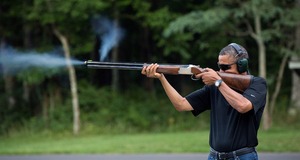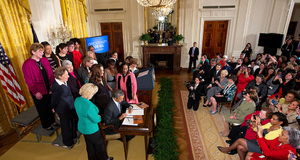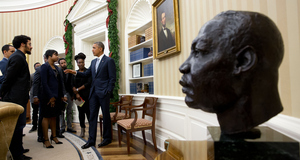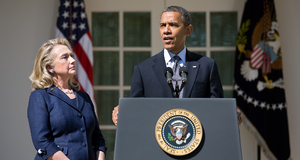The Obama PresidencyWhy Taking the White House Online Does Not Make It More Accessible To The PublicThe 2008 Obama CampaignIt is not surprising that the Obama administration would want to capitalize on the progressive social media usage that was so effective throughout his 2008 campaign once in office. His run for the presidential office was utterly revolutionary and set the precedent that no high-level race can be won without an extensive digital network. His campaign chant “Yes We Can” inspired and engaged a massive base of grassroots supporters. This aligned with the efforts of this staff to insert media technology efforts into the campaign. A combination of strategies and mediums generated a powerful shadow of the Obama brand that inspired voters to both support this new candidate, and to put in their own sizable efforts into assisting the campaign. Used effectively, social media has the capacity to engage people and build confidence in their own power as influencers and see the very real possibility of directly affecting social change. On a platform like Twitter, every voice can be heard equally and on the same plane as all other users. This directly serves the Obama campaigns ideal that the public alone was responsible for electing him. More importantly, the very basic level of public engagement with the campaign alluded to the understanding that they were electing a President who was ready and willing to engage with them once in office. Providing agency to citizens was a deeply attractive quality to voters in 2008 who felt disconnected with the outgoing President George W. Bush. An analysis of the use of media technology by the campaign will provide a foundation for interpreting how the White House has mobilized supporters after his inauguration. Ranjit Mathoda, a lawyer and finance expert who blogs at Mathoda.com stated,“Thomas Jefferson used newspapers to win the presidency, F.D.R. used radio to change the way he governed, J.F.K. was the first president to understand television, and Howard Dean saw the value of the Web for raising money…. But Senator Barack Obama understood that you could use the Web to lower the cost of building a political brand, create a sense of connection and engagement, and dispense with the command and control method of governing to allow people to self-organize to do the work.”8 Obama’s campaign was such a juggernaut for dozens of reasons. His candidacy was nuanced and innovative and as the first post-baby boomer presidential candidate he represented a changing of the guard. The change could be felt immediately. When then-Senator Barack Obama announced his campaign for President in 2008, the website BarackObama.com was launched online in its entirety within the week.9 The key difference between Obama’s online campaign strategies and of those who went before him, was that conscious effort was put in to build up his own network, not just in terms of fundraising, but a base of supporters that he could call upon for a myriad of political reasons. In summary, “the American populace was called to action in a way that it had not been in the past, and it responded with resoundingly positive action.”10 In this way, the Obama campaign showed supporters that they could participate at the level at which they were comfortable and stressed their individual importance to achieving the shared goal of an Obama White House. This is not to say that fundraising was not a top target of this new online communications strategy. Indeed with Senator Obama’s public refusal to accept Super-PAC funding there was more need than ever to break the bank with donors to combat John McCain’s much more established network. In fact, in terms of national fundraising data collected by CNN, Obama nearly doubled the amount of money raised by McCain11in the 2008 election. Looking further, 47% of the money raised by the Obama campaign was made up of donations smaller than $200 and donations of $2,300 or more dollars accounted for 27% of donations. Conversely, McCain received 26% of campaign contributions in less than $200 denominations and 49% from $2,300 or greater donations.12 By engaging and building a donor base online, Obama broke records for campaign contributions and established a database of supporters designed specifically to transition into his administration and to continue prolific fundraising into his second term and beyond. A key facet of building up fundraising and defining a media message to the public is the use of email to solicit donors. Even just six years ago, these types of emails were far from the ubiquitous presence in inboxes that they are today, complete with catchy subject lines and flashy graphics. A 2008 study by Qingwen Dong of these messages consistently point to the tone of email communication between Obama and McCain as being the most concrete and decisive difference. Emails from the Obama campaign concentrated on a sense of togetherness and unity behind a common cause. Particularly using the word ‘you’ repeatedly became a theme throughout such communication to Obama supporters. Dong and his co-authors asserted that “this emphasis of the pronoun (you) puts the receiver/audience in the position of the subject who joins the sender to become members of the same team, playing a determining role in shaping the discourse.”13 Additionally, the campaign heavily utilized the ‘sender’ of the email to foster a sense of inclusion within the cause. Many emails came with Michelle Obama’s signature as well as from senior campaign staff and respected Democrats like Caroline Kennedy. Many of these were signed informally, often first name only, and included signatures such as “Sent from my iPhone” to further the image that you as a donor were receiving authentic requests from those high up in the campaign. A major social media presence was the most visible difference in strategy unique to the Obama campaign. Facebook, Twitter, Myspace and YouTube were all used heavily to magnify the perception that Obama the candidate was approachable and in touch with his future constituents. Posting live updates on these brand new platforms made him and his campaign a part of people’s everyday lives, and the personalization of these messages was revolutionary. Twitter had just launched in 2006 when “Obama joined Twitter in March 2007 and by Election Day 2008, he was one of themost popular peopleon the microblog. He had more than 118,000 followers, while his Republican rival McCain had a mere 4,942.”14 Indeed at the time Twitter had just begun to access the political and journalistic realms that so define its presence today. To make a comparison, in 2011 44% of US Senators were active on Twitter; today that number is 100%.15 Effectively, Obama’s campaign social media use legitimized the still developing program and has a significant amount to do with its pronounced success today. The most significant use of digital communication and indeed one of the most often referenced was the announcement of Vice Presidential candidate Joe Biden by text message to all subscribing supporters. This move while risky had enormous payoff, especially in 2008 before text message alerts were commonplace users equated them almost exclusively with short casual interactions between close friends and family. By forsaking the usual drama of a formal announcement and instead prioritizing sharing the news with supporters, the Obama campaign brilliantly employed its overarching strategy of engaging the public at every level. Most important however, is the precedent set by such participation, and the expectations thereafter of the Obama Presidential administration. By engaging the public and fostering their involvement in the campaign, the Obama team made a normative promise to continue that level of openness once in office. “‘People will continue to expect a conversation, a two-way relationship that is a give and take,’ said Thomas Gensemer, [who] helped conceive and put into effect Obama’s digital outreach. ‘People who were part of the campaign will opt in to political or governing tracks and those relationships will continue in some form.’”16 Constituents felt hopeful and excited about the new lanes of communication and that contributed to the overwhelming expectations for the Obama Presidency. Not only was President Obama mandated to overhaul the economic recession, solve immigration and confront the devastating partisanship that was gridlocking Congress, he was expected to do it all in constant contact with the public. Supporters had become accustomed to having their voices heard and the Obama campaign supported that understanding and expectation for his time in office. Transition to the White HouseThe transition efforts bringing the Obama-Biden ticket into office harnessed similar strategies to ensure that the database they had worked so hard to accrue would still be effective in the White House. Immediately following the election, President Obama refocused his campaign efforts on ensuring that his particular brand of engagement would translate into the presidency. The stellar web creation teams responsible for BarackObama.com switched gears to the launch of Transition.gov and Change.gov, the first ever transition-focused web pages that allowed the public to understand how the process was happening in real-time.17 One of the most famous parts of Obama’s technological transition was his utter refusal to give up his Blackberry upon his inauguration, then considered a security hazard by White House personnel. In early 2009 it was a buzz-worthy topic as the public was faced with a tangible fight between their new-fangled President and the old adages of the formal White House. The New York Times then reported, “the battle over whether the president could keep his BlackBerry has been fueled to a large degree by Mr. Obama himself, who mentioned it again and again. He would not take no for an answer. In an interview this month, he worried aloud, “They’re going to pry it out of my hands.”’18 Constituents related to this plight, the prospect of giving up their own cell phones had already become an unrealistic idea, although one would assume that today there would be little to no discussion of a President giving up their smartphone. While the President did win this battle, to the tune of a $3,000 specially-made replacement device with a secure email address opened up to only his closest friends and advisors,19 there were still questions of how this new White House would redefine itself in the digital sphere. At the start, it seemed that Obama the President would utilize social media to garner support for his legislative actions, similar to the media strategy of his campaign. A noticeable early change was the switch from a weekly radio address to the nation, to a weekly YouTube video address, his encouragement of other senior staff to make social media part of their public relations strategies as well. The President worked initially, indeed in his first public video address on January 24, 2009, to connect with constituents on the basis of their economic concerns and publicly announce the impending American Reinvestment and Recovery Act (ARRA). It seemed as though the Obama media strategy was being carried out just as was expected, and supporters would continue their deep involvement with the practices carried out by their President. However shortly after the ARRA’s passage, popular opinion began shifting, with approval ratings dropping immediately after his 2009 inauguration; dropping a full seventeen points in the first calendar year alone.20 Today, the vast majority of Americans do not believe the stimulus package was successful in solving the tremendous economic problems the United States faced in 2009. Why wasn’t the Obama administration able to capitalize on its media successes? To answer this question, one must first consider the preliminary efforts of the nascent Obama administration to open digital lines of communication with the public.Continued on Next Page » Suggested Reading from Inquiries Journal
Inquiries Journal provides undergraduate and graduate students around the world a platform for the wide dissemination of academic work over a range of core disciplines. Representing the work of students from hundreds of institutions around the globe, Inquiries Journal's large database of academic articles is completely free. Learn more | Blog | Submit Latest in Political Science |


















